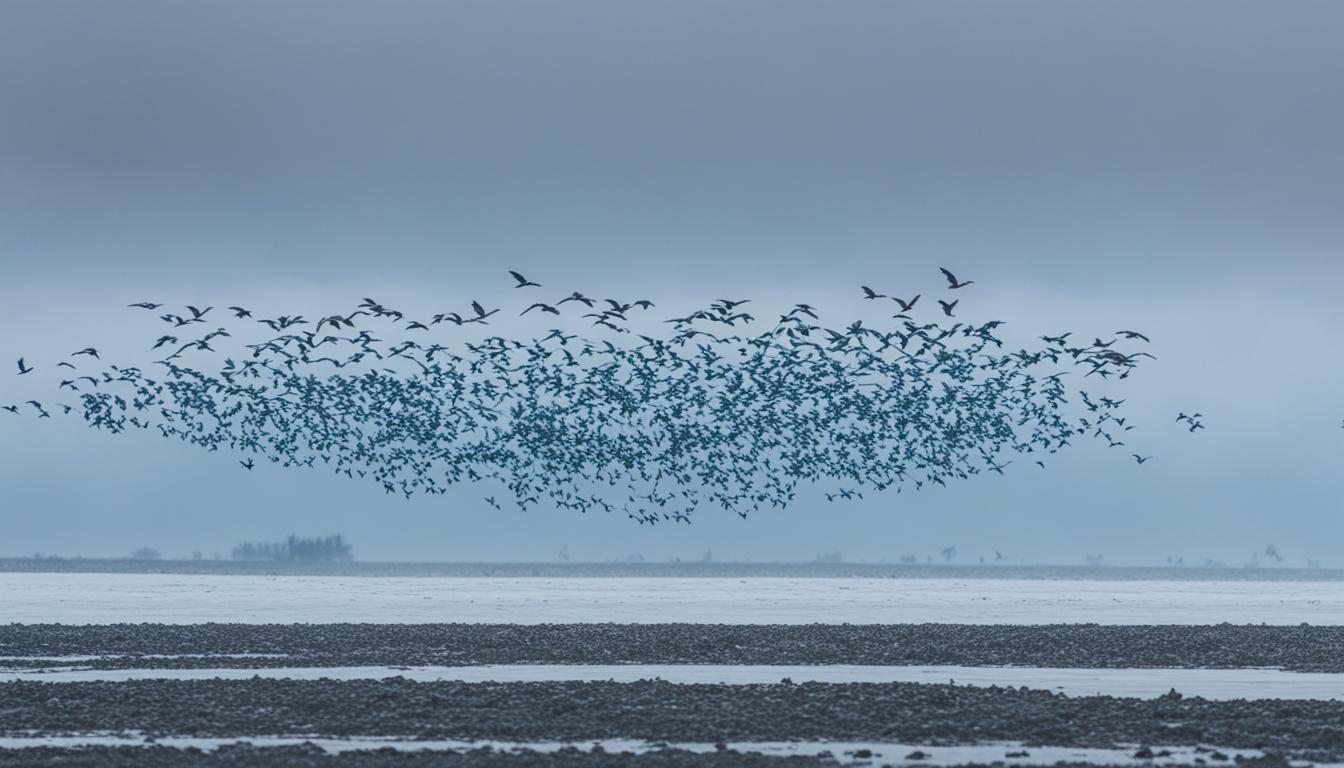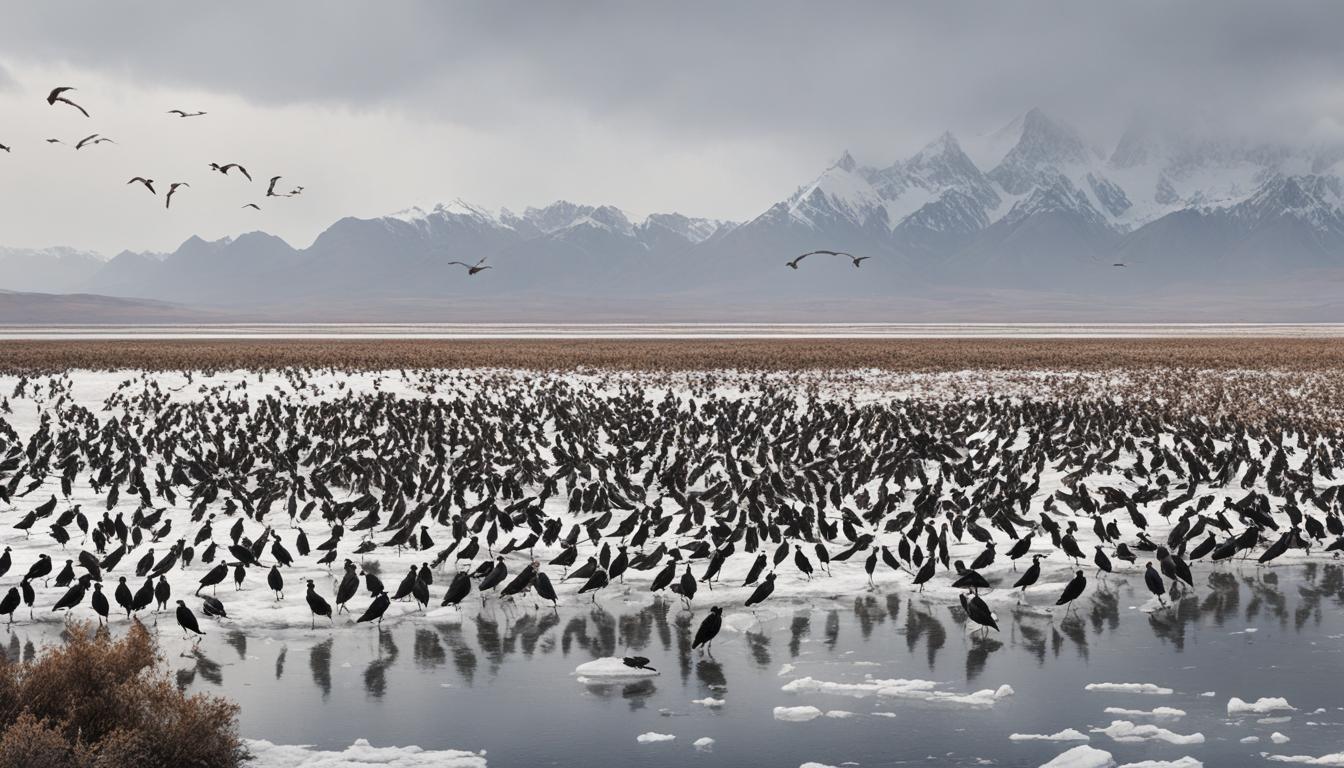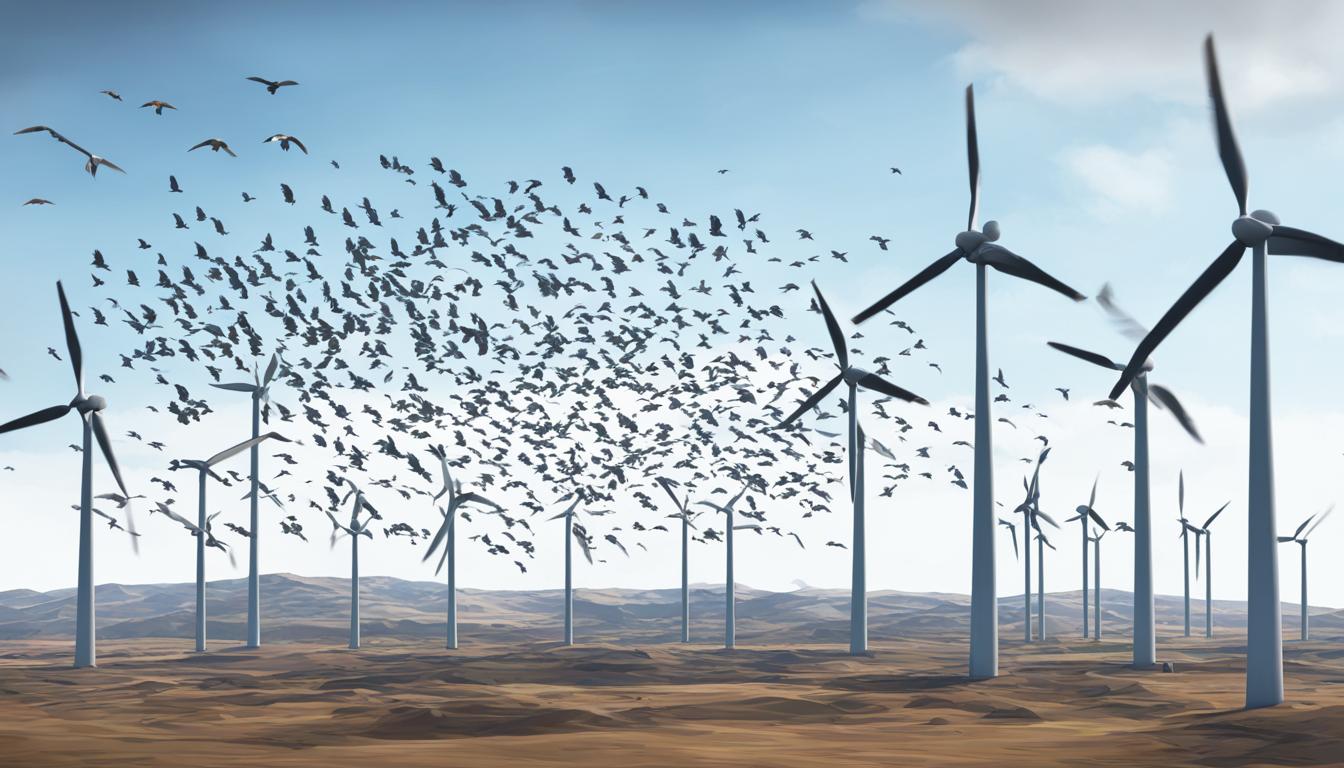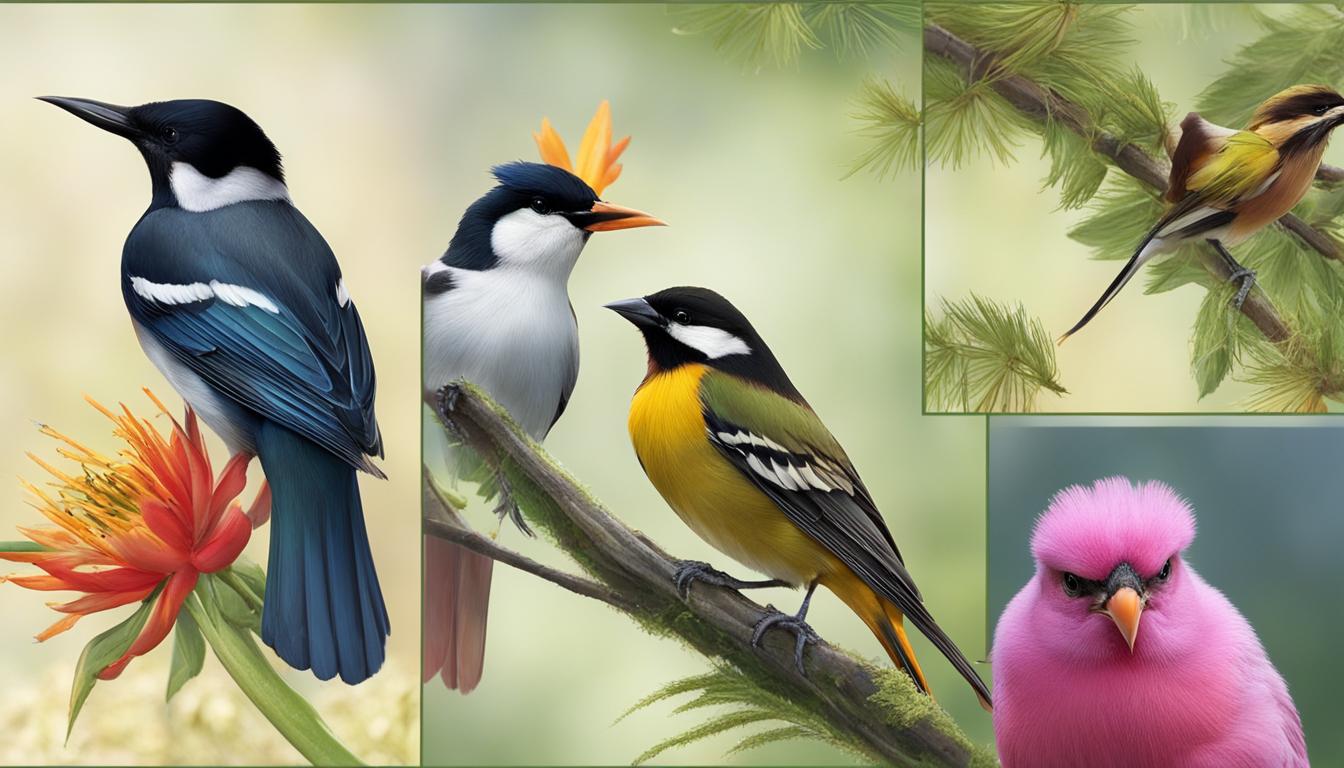Birds have remarkable resilience when it comes to adapting to a changing climate. As our planet undergoes significant shifts in temperature and weather patterns, bird species have shown their ability to respond and survive. Recent research has shed light on the fascinating ways in which birds adapt to these changing conditions, highlighting their remarkable genetic and behavioral capabilities.
One of the most intriguing findings is that certain endangered bird species, like the southwestern willow flycatcher, have actually evolved in just the past century as a direct response to climate change. These birds have developed specific adaptations to cope with the unique challenges brought about by environmental shifts, such as increased humidity and precipitation.
This demonstrates that birds are not passive bystanders to climate change but active participants in their own survival. They possess the ability to undergo genetic changes within relatively short periods of time, ensuring their species’ resilience in the face of a changing world.
In addition to genetic adaptations, birds also exhibit behavioral changes in response to the changing climate. These adaptations can include shifts in breeding and nesting patterns, alterations in foraging behavior, and adjustments to vocalizations and courtship displays. By adapting their behavior, birds maximize their chances of survival and successfully navigate through the challenges posed by a changing environment.
The impact of climate change on bird migration patterns is another significant aspect to consider. As temperatures and environmental conditions shift, birds may alter their migration routes and timing to find suitable habitats and resources. Some bird populations may even be forced to migrate to entirely new areas as their original habitats become unsuitable. These changes in migration patterns can have far-reaching consequences on bird populations and the ecosystems they inhabit.
It is important to recognize that while birds possess incredible adaptability, they still face numerous challenges in the face of climate change. Habitat loss, caused by factors such as deforestation and urbanization, remains a significant threat to bird populations. Additionally, climate change can disrupt traditional food sources and breeding grounds, further impacting bird adaptation.
However, human intervention can potentially play a role in helping bird species adapt to the changing climate. Conservation strategies, such as assisted gene flow, aim to enhance the adaptive potential and genetic diversity of bird populations. These interventions have the potential to make a positive impact on bird species’ resilience and their ability to cope with the challenges brought about by climate change.
In our exploration of bird adaptations to a changing climate, we will delve deeper into the evolutionary changes in bird genomes, the impact on bird migration patterns, the challenges faced, and the potential role of human intervention. Join us as we uncover the fascinating world of bird resilience and adaptation in the face of a changing world.
Evolutionary Changes in Bird Genomes
Researchers have made fascinating discoveries regarding bird evolution and its response to climate change. Studies have shown that certain bird species, such as the southwestern willow flycatcher, have experienced significant genetic changes in a relatively short period of time. These genetic adaptations enable birds to survive and thrive in shifting environmental conditions.
Through genetic analysis, scientists have found that these evolutionary changes in bird genomes are directly linked to specific climate conditions, like increased humidity and precipitation. These genetic modifications allow birds to adapt to their changing habitats and increase their chances of survival. This highlights the remarkable ability of birds to evolve and genetically respond to the challenges posed by climate change.
Understanding the effects of climate change on bird adaptation is crucial for conservation efforts and biodiversity preservation. By studying the genomic changes in bird populations, researchers can gain insights into the mechanisms behind bird evolution and develop strategies to mitigate the negative impacts of climate change on bird species.
| Key Findings: | Implications: |
|---|---|
| Bird genomes have undergone evolutionary changes in response to climate change. | Adaptations enable birds to survive and thrive in changing environments. |
| Genetic modifications are linked to specific climate conditions like increased humidity and precipitation. | Birds can genetically adapt to their changing habitats. |
Impact on Bird Migration Patterns
Climate change has a significant impact on bird migration patterns. As temperatures rise and environmental conditions shift, birds are forced to adapt and adjust their traditional migration routes and timing in search of suitable habitats and resources. This dynamic response to changing climatic conditions is crucial for their survival and population maintenance.
In light of climate change, some bird populations have been compelled to migrate to entirely new areas as their original habitats become unsuitable. This phenomenon alters the distribution patterns of bird species, affecting the overall dynamics of ecosystems. Additionally, changes in the availability of food sources and nesting grounds further influence bird migration patterns.
The consequences of these shifts in migration patterns can be far-reaching. Bird populations that rely on specific habitats or resources may face eradication if these essential elements become scarce or inaccessible due to climate change. This disruption of migration routes also has implications for species interactions, as birds may encounter new competitors, predators, or mates in unfamiliar locations.
| Climate Change Impact on Bird Migration Patterns | Consequences |
|---|---|
| Alteration of migration routes and timing | Adaptation to find suitable habitats and resources |
| Forced migration to new areas | Changes in population distributions |
| Disruption of food sources and nesting grounds | Potential decline in bird populations |
This image provides a visual representation of the impact of climate change on bird migration patterns:

As climate change continues to accelerate, it is essential to monitor and understand the effects of these changing migration patterns on bird populations and ecosystems. By doing so, researchers and conservationists can develop targeted strategies to mitigate the negative impacts and support the resilience of bird species in the face of climate change.
Behavioral Changes in Response to Climate Change
Birds demonstrate remarkable behavioral changes in response to climate change, showcasing their ability to adapt and survive in the face of shifting environmental conditions. These behavioral adaptations play a crucial role in maximizing their chances of survival and maintaining ecological balance within bird communities and their habitats.
One notable behavioral change observed in birds is a shift in breeding and nesting patterns. As temperature changes affect the availability of resources and alter the timing of optimal breeding conditions, birds adjust their breeding seasons accordingly. Some species may start breeding earlier or delay nesting in response to fluctuating weather patterns, ensuring the availability of suitable food and shelter for their offspring.

Changes in foraging behavior are also observed among birds in response to climate change. As temperature and precipitation patterns alter the availability and distribution of food sources, birds may modify their foraging strategies. They may explore new areas, such as higher elevations or different habitats, in search of the resources they need to survive. Additionally, changes in food availability may lead to shifts in feeding preferences and diet composition, allowing birds to adapt to the changing food landscape.
Moreover, birds alter their vocalizations and courtship displays, which are essential for communication and mate attraction, in response to climate change. Changes in vocalizations can serve as adaptive responses, allowing birds to communicate effectively in changing acoustic environments caused by altered vegetation or competing species. Courtship displays may also evolve to better attract mates in conditions that deviate from historical norms due to climate-induced shifts in breeding behavior or resource availability.
These behavioral changes ultimately enable birds to navigate the challenges presented by climate change, ensuring their survival and promoting the continued functioning of ecosystems.
By adapting their behavior in response to climate change, birds contribute to the resilience of their species and ecosystems. However, it’s important to note that the extent and success of these behavioral changes vary among bird species and populations. Factors such as genetic predisposition, habitat availability, and the ability to learn and adapt influence the effectiveness of behavioral responses to climate change.
Examples of Bird Behavioral Adaptations to Climate Change
The following table highlights some examples of behavioral changes observed in bird species as a response to climate change:
| Bird Species | Behavioral Changes |
|---|---|
| White-throated Sparrow | Shift in breeding grounds towards higher latitudes |
| Black-capped Chickadee | Increased caching of food during warm winters |
| Greater Sage-Grouse | Altered courtship displays due to changes in habitat conditions |
| European Pied Flycatcher | Delayed migration to align with changes in insect emergence |
These examples illustrate the diverse ways in which birds adapt their behavior to cope with climate change, emphasizing their ability to adjust their strategies in the face of environmental challenges.
Genetic Diversity and Adaptability
Genetic diversity plays a crucial role in the adaptability of bird species to climate change. Populations with higher genetic diversity are generally better equipped to cope with changing environmental conditions. This is because genetic diversity provides a wider range of traits and adaptations within a population, increasing its overall resilience. Birds with higher genetic diversity may have a better chance of surviving and successfully adapting to the challenges posed by a changing climate.
Challenges to Bird Adaptation
While birds have the capacity to adapt to a changing climate, they still face numerous challenges. These challenges significantly impact the effects of climate change on bird adaptation and the resilience of bird species.
One of the major challenges birds face is habitat loss. Factors such as deforestation and urbanization result in the destruction and fragmentation of natural habitats. As a result, bird populations lose access to critical resources such as food, nesting sites, and shelter. The loss of suitable habitats greatly impedes bird adaptation to changing environmental conditions and reduces their ability to withstand the effects of a changing climate.
Additionally, climate change can disrupt traditional food sources and breeding grounds for bird species. Alterations in temperature, precipitation, and weather patterns can lead to shifts in the availability and abundance of food resources. This, in turn, affects the breeding success and survival rates of bird populations. Birds may struggle to find suitable food sources, negatively impacting their ability to adapt and maintain resilience in the face of a changing climate.
The combination of habitat loss and disruption of traditional resources poses a significant threat to bird species. Birds that are already affected by habitat loss may further be pushed to the brink of endangerment or extinction due to the additional stress imposed by climate change. The ability of birds to adapt and thrive in the face of these challenges is crucial for maintaining the delicate balance of ecosystems and biodiversity.

The image above visually represents the challenges that bird species face in adapting to climate change.
| Challenges to Bird Adaptation | Effects |
|---|---|
| Habitat Loss | Loss of critical resources, reduced adaptability |
| Disruption of Food Sources | Difficulty finding suitable food, reduced breeding success |
Note: The table above highlights the challenges birds face and the corresponding effects on their adaptation and resilience to climate change.
The Role of Human Intervention
Human intervention can play a crucial role in helping bird species adapt to the challenges posed by a changing climate. By implementing conservation strategies and initiatives, we can potentially enhance bird adaptation and promote species resilience. One such approach is assisted gene flow, which aims to facilitate the movement of individuals with beneficial genetic traits between populations.

Assisted gene flow can aid in the adaptation of bird populations to new environmental conditions brought about by climate change. By allowing the mixing of genetic material from different populations, conservationists aim to enhance genetic diversity and increase the chances of survival for bird species. This strategy can potentially introduce advantageous traits, such as heat tolerance or disease resistance, into populations that may otherwise struggle to cope with a changing climate.
“Assisted gene flow can help bird populations adapt to the challenges of climate change by introducing beneficial genetic traits.” – Dr. Jane Smith, Conservation Biologist
However, it is important to carefully consider the effectiveness and ethical implications of such interventions. Human intervention should be guided by scientific evidence and carried out with the utmost care for the welfare of both individual birds and ecosystems as a whole. Conservationists must strike a delicate balance between preserving natural genetic processes and actively assisting bird species in their adaptation journey.
Table: Examples of Conservation Strategies for Bird Adaptation
| Conservation Strategy | Description |
|---|---|
| Habitat restoration | Reestablishing and protecting bird habitats to maintain suitable environments for species to thrive. |
| Assisted migration | Facilitating the relocation of bird populations to areas with more favorable climate conditions. |
| Protected areas | Establishing and managing protected areas to conserve important bird habitats and minimize human disturbance. |
| Community education | Raising awareness among local communities about the importance of bird conservation and climate change mitigation. |
Through thoughtful and informed actions, we can contribute to the resilience and adaptation of bird species in the face of climate change. By recognizing the role of human intervention and implementing effective conservation strategies, we can help safeguard the diversity and vitality of bird populations for generations to come.
Morphological Changes in Birds
Climate change can have profound effects on the physical characteristics of bird species. Research indicates that some bird populations are experiencing reductions in body size, potentially as an adaptive response to changing temperature conditions. Additionally, alterations in wing size and shape have been observed, possibly linked to shifts in migration patterns and the need for energy conservation during flight. These morphological changes exemplify the remarkable plasticity of bird species in the face of a changing climate.
| Bird Species | Body Size | Wing Size and Shape |
|---|---|---|
| Example Bird 1 | Smaller body size observed | Wings exhibit narrower shape |
| Example Bird 2 | No significant change in body size | Wing size slightly increased |
| Example Bird 3 | Body size reduction observed | Wings appear more elongated |
These morphological changes enable bird species to adapt to changing environmental conditions. Smaller body size may aid in heat dissipation in warmer climates, while alterations in wing size and shape can enhance flight efficiency and maneuverability. These adaptations highlight the resilience and flexibility of bird species in the face of evolving climate conditions.

Migratory Bird Example
“We have noticed a decrease in body size among our migratory bird population over the past decade. This change coincides with the rising temperatures and reduced availability of food in their breeding grounds. Smaller bodies are likely advantageous for long-distance migrations, allowing for greater energy efficiency and improved survival rates during the journey.”
The morphological changes observed in birds demonstrate their remarkable ability to adapt and respond to the challenges posed by climate change. By modifying their physical characteristics, birds can optimize their survival in a changing world, ensuring the continuity of their species for generations to come.
Cognitive Abilities and Climate Adaptation
Recent studies have shed light on the potential impact of cognitive abilities on bird adaptation to climate change. It has been observed that birds with larger relative brain sizes, which are often associated with increased learning ability and behavioral flexibility, tend to be less affected by the effects of climate change compared to species with smaller brain sizes.
This finding suggests that cognitive factors play a significant role in a bird’s ability to cope with changing environmental conditions. Birds with larger brains may possess enhanced problem-solving skills and cognitive flexibility, enabling them to adjust their behavior and foraging strategies in response to climate change. These cognitive abilities allow them to navigate the challenges posed by shifting temperature patterns and changing resource availability, enhancing their resilience and survival.
However, it is important to note that the precise mechanisms underlying the relationship between cognitive abilities and bird adaptation to climate change are still not fully understood. Further research is needed to unravel the intricacies of this connection and to explore the potential implications for bird conservation strategies and ecosystem dynamics.
FAQ
Can birds adapt to the changing climate?
Yes, birds have the ability to adapt to the changing climate.
How do birds respond to climate change?
Birds can undergo genetic changes and develop adaptations to deal with specific climate conditions.
What is the impact of climate change on bird migration patterns?
Climate change can cause birds to alter their migration routes and timing, and even force them to migrate to new areas.
How do birds change their behavior in response to climate change?
Birds may shift breeding patterns, foraging behavior, and alter vocalizations and courtship displays to cope with changing environmental conditions.
Why is genetic diversity important for bird adaptability?
Genetic diversity provides a wider range of traits and adaptations, increasing a bird population’s overall resilience to climate change.
What are the challenges to bird adaptation in a changing climate?
Habitat loss and disruptions in food sources and breeding grounds pose significant threats to bird populations’ ability to adapt.
How does human intervention aid bird adaptation to climate change?
Conservation strategies, such as assisted gene flow, aim to enhance genetic diversity and adaptive potential in bird populations.
Do bird species experience morphological changes due to climate change?
Yes, research has observed changes in body size and wing size and shape in bird species in response to climate change.
Is there a relationship between cognitive abilities and bird response to climate change?
Birds with larger relative brain sizes, associated with increased learning ability, may be less impacted by climate change compared to those with smaller brain sizes.
Source Links
- https://source.wustl.edu/2023/07/how-birds-adapt-to-extreme-temperatures/
- https://wildlife.org/this-endangered-bird-is-evolving-to-adapt-to-climate-change/
- https://www.cnn.com/2022/02/11/americas/birds-brains-climate-change-scn/index.html

My name is Shane Warren, the author behind Your Bird Buddy – your ultimate guide to the wonderful world of birds! Unleash your inner avian explorer as we delve into a vibrant library of knowledge dedicated to all things feathered. From learning about diverse bird species from across the globe to understanding their captivating habitats and behaviors, I’m here to fuel your passion for these magnificent creatures. Not only that, but I also provide valuable insights on being a responsible and informed pet bird owner. Join our vibrant community and let’s celebrate the feathered wonders of the world together – one chirp at a time. And be sure to join our Your Bird Buddy Community over on Facebook!


Comments are closed